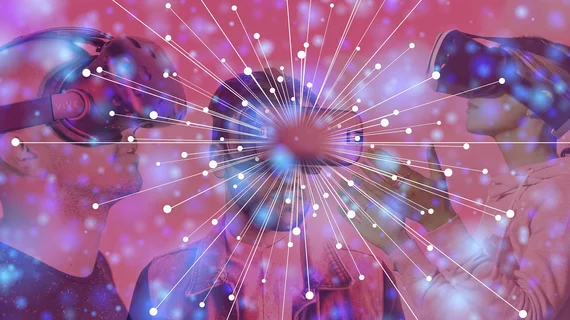Virtual reality hypnosis could alter pain management during interventional procedures
Procedures leading up to radiation therapy for prostate cancer can be anxiety-inducing and painful, but experts are optimistic a new relaxation method that is equal parts ancient and futuristic could help to ease patients’ worries.
In addition to using local anesthesia to reduce pain, experts propose that the use of virtual reality hypnosis (VRH) also could serve as a relaxation and distraction tactic to reduce patients’ anxiety during invasive procedures required for treatment planning. In instances when patients require gold seed insertion into the prostate and/or targeted biopsies, VRH has the potential to relieve patient discomfort, explained authors of a new paper published in The Journal of Medical Imaging and Radiation Sciences.
“These procedures can induce pain and anxiety for some patients,” corresponding author of the new study Jane Wong, with the Department of Radiation Oncology at the University of Toronto in Canada, and co-authors explained. “Virtual reality hypnosis is the combination of a 360-degree video display with audio and mental guides for relaxation and distraction during medical procedures.”
The use of virtual reality in medical settings has grown in recent years—so much so that the U.S. Centers for Medicare and Medicaid Services recently created a new level 2 Healthcare Common Procedure Coding System code for a VR device intended to guide users through research-backed pain management techniques.
The U.S. Food and Drug Administration also has signaled that VR technology use is expected to grow in medicine. Earlier this year, the agency released a list of AR and VR medical devices that are currently legal to be marketed in the U.S. through 510(k) clearance, de novo classification or premarket application approval. This move was made following recommendations the FDA received at the CDRH Patient Engagement Advisory Committee held in July 2022.
But how do patients feel about tapping into virtual reality to manage their pain?
Experts recently sought to better understand this within the realm of interventional prostate procedures. To do this, they surveyed and observed 23 patients who were undergoing biopsy and/or gold seed insertion using a two-step local anesthesia procedure. Patients were screened on their knowledge of and interest in VRH prior to and following their procedures, while their stress levels were monitored before, during and after said procedures.
While 74% of the cohort agreed they would be interested in trying VRH prior to their procedure, pain and anxiety during their local anesthesia injection prompted some to change their tune; following the procedure, 83% of patients with higher than average pain scores and 80% of those with heightened anxiety scores indicated that they would be willing to try using VRH to ease the experience.
The utility of VRH could be more beneficial in patients with a history of low pain tolerance, the group explained, later adding that this demographic should be the focus of future research on the feasibility of VRH.
The study abstract is available here.

